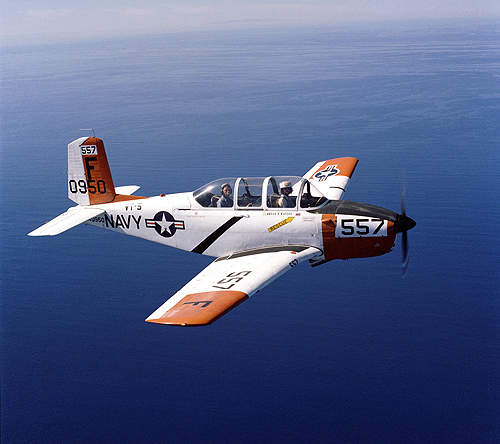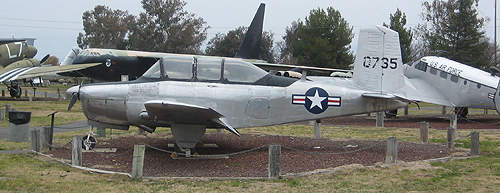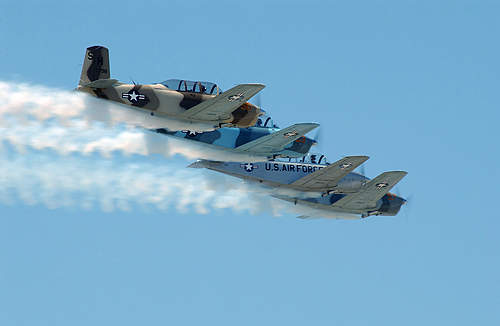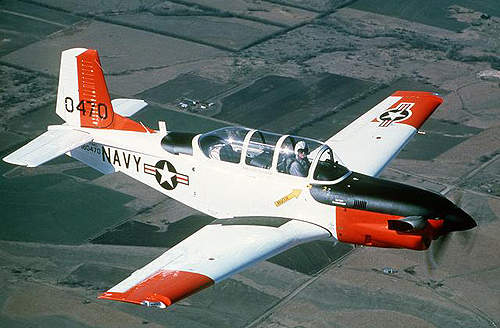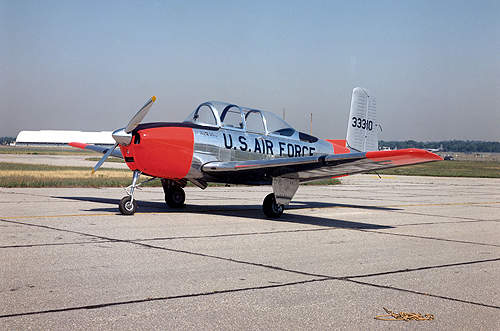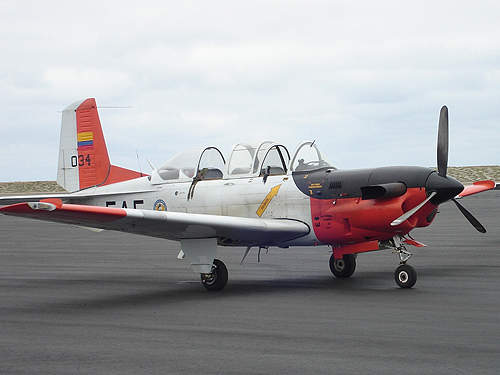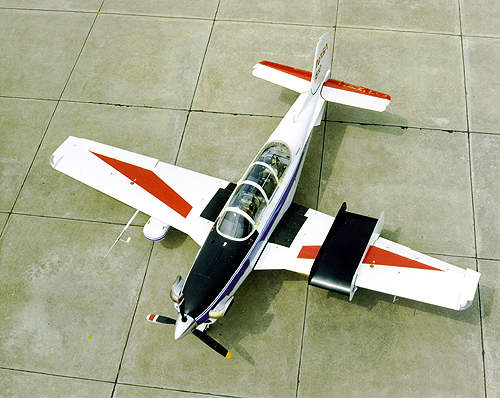The T-34 Mentor is a single-engine, basic trainer aircraft designed and manufactured by Beechcraft Aircraft Company (now known as Hawker Beechcraft) for the United States Air Force (USAF) and United States Navy (USN). It was derived from the Beechcraft Bonanza aircraft. About 2,300 T-34s were built between 1953 and 1959.
Chippewa Aerospace signed a contract with Nasa’s Glenn Research Centre in April 2010 to overhaul the avionics of the Nasa operated T-34 Mentors.
Variants of the T-34 trainer aircraft
The T-34 has seven variants: YT-34, T-34A, T-34B, YT-34C, T-34C Turbo-Mentor, T-34C-1 and Turbo-Mentor 34C. The YT-34 is a prototype model.
The T-34A is an advanced trainer built for the USAF. It is powered by a single Lycoming O-470-13 piston engine.
The T-34B is an improved model deployed by the USN. It features differential braking to aid steering control, rudder pedals and wing dihedral. The first T-34B was delivered to the USN in 1955.
The T-34C is an upgraded version of T-34B, incorporated with modern turboprop engines.
The T-34C-1 is an armed version built for export to Argentina Navy, Taiwan Air Force, Ecuadorian Air Force and Navy, Gabon Presidential Guard, Indonesian Air Force, Moroccan Air Force, Peruvian Navy and Uruguayan Navy. It was introduced in 1977.
T-34 orders and deliveries
The Algerian national pilot training school acquired six civil Turbine Mentor 34Cs in 1979 at a cost of $3.5m. The Dryden Flight Research Centre of Nasa procured the first of two T-34Cs from the USN in 1996 to operate from the Glenn Research Centre in Cleveland, Ohio for demonstrating turboprop engines. The USN delivered six T-34Cs to the US Army to chase aircraft at Edwards Air Force Base and Fort Bragg.
Designi of the T-34 training aircraft
The T-34 was designed by modifying the Beechcraft Bonanza. Design modifications included superseding the Bonanza’s fuselage with narrow fuselage and incorporating modern engines. The aircraft can hover with a flight envelope of +10g and -4.5g. It can execute hard landings even in bad climatic conditions.
T-34 development
The development of T-34 began in 1940s under the designation Beechcraft Model 45 for replacing the North American T-6 Texan II aircraft. Three design concepts were initially proposed, but the final design was issued in 1948. The maiden flight of the Model 45 took place in December 1948.
In 1950, the USAF ordered three YT-34 test aircraft whose production commenced in 1953. The YT-34 was renamed as T-34 in March 1953. It was selected by 23 countries worldwide to train professional military pilots. The T-34 entered service with the USAF in May 1954.
Production of T-34A and T-34B was halted in 1956 and 1957 respectively. The B45, a licensed version of T-34, was produced in Canada, Japan and Argentina until 1958. Its production was suspended in 1959.
An improved version, the T-34C Turbo Mentor, was built in March 1973. It is powered by Pratt & Whitney Canada PT6A-25C turboprop engines rated at 559kW of output power. Despite the suspension of T-34C production in April 1990, many T-34s still remain in service. Training squadrons at the Whiting Field have superseded the T-34C, with the T-6 Texan II.
T-34 cockpit
The T-34 boasts a spacious cockpit enclosed with an oval shaped glass canopy. The cockpit can accommodate two flight crew members, a trainee pilot and a flight instructor in the tandem seat configuration to provide clear visibility. It is fitted with a LCD display, DX6i 2.4GHz computer radio, AR6200 receiver, timer, servo monitor and progressive trainer system.
Armaments and munitions
The T-34 is armed with two 7.62mm general purpose machine guns which can fire munitions at the rate of 500 to 600 rounds a minute. The muzzle velocity and weight of the gun are 853m/s and 10.5kg respectively.
It can carry up to 544kg of weapons payload including flares, fire bombs, anti-tank missiles and rocket pods.
Engines
The T-34 is powered by a single Continental E185 Piston aero-engine rated at 138kW of output power.
Landing gear
The aircraft is fitted with a tricycle type landing gear, comprising two single-wheeled main gears which pull back into wings, and a dirigible nose gear which retracts into the engine compartment upon take-off.
T-34 performance
The T-34 can climb at the rate of 7.5m/s. The maximum and cruise speeds of the aircraft are 518km/h and 396km/h respectively. The stall speed is 98km/h. The range and service ceiling are 1,311km and 9,145m respectively.
US Defence Sector – Market Opportunity and Entry Strategy, Analyses and Forecasts to 2015
Detailed analysis and forecasts of the US defence market are available from our business information platform Strategic Defence Intelligence. For more information click here or contact us: EMEA: +44 20 7936 6783; Americas: +1 415 439 4914; Asia Pacific: +61 2 9947 9709 or via email.

